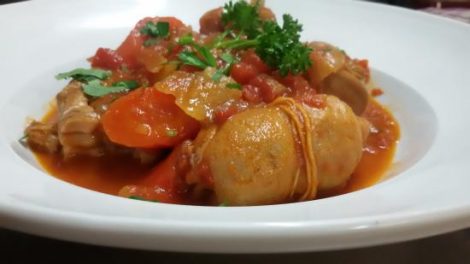HISTORY
[vc_Brique_Jaune titre=”Did you know ?” texte=”Pieds and paquets were a dish traditionally served on Mardi Gras or Shrove Tuesday in the south of France.”]

Saint-Trophime d’Arles
Records show that in 1476 sheep and calves feet were served at the funeral of Canon Etienne Roberti by his brothers from Saint-Trophime Cathedral in Arles. Two centuries later, local Aix poet Cesar Pellenc, in his work ‘The pleasures of Life’ (French: Les Plaisirs de la Vie), described the dish as follows: ‘the rich and the poor enjoy them in everyday life.’
Pieds et paquets, translated literally as ‘feet and small parcels’ first appeared in a Provencal cookbook in 1888 by Marius Morard, a classic still in print today (French: Manuel complet de la Cuisiniere Provencale).
Soon the invention of canning to preserve food would allow the fame of the delicacy to spread far and wide across France.
THE ART OF PRODUCTION
These dainty packages of stuffed tripe are usually prepared from sheep’s intestines and feet. All the stuffing and boning make this is a time-consuming, intricate process which requires slow-cooking for 10 hours!
The Marseilles variant, pieds et paquets à la marseillaise is the real deal.

Pieds et paquets à la marseillaise
Deconstructing the dish:
Rumen, the first part of the sheep’s stomach, ie the ‘tripe’ is cut into squares, leaving a small buttonhole in one corner. This is then stuffed with either a piece of pork belly rolled in parsley, or stuffing made from small pieces of lamb’s intestine and rolled into small packages, held together by passing a corner of the tripe through the buttonhole. The tripe and partially boned lamb’s feet are then simmered in a sauce.
Sheep’s feet can be prepared in many different ways, such as coated in breadcrumbs, or served in jelly or à la rouennaise (slow-cooked in broth until tender, boned and stuffed with sausage meat, finally coated in breadcrumbs and pan-fried).
